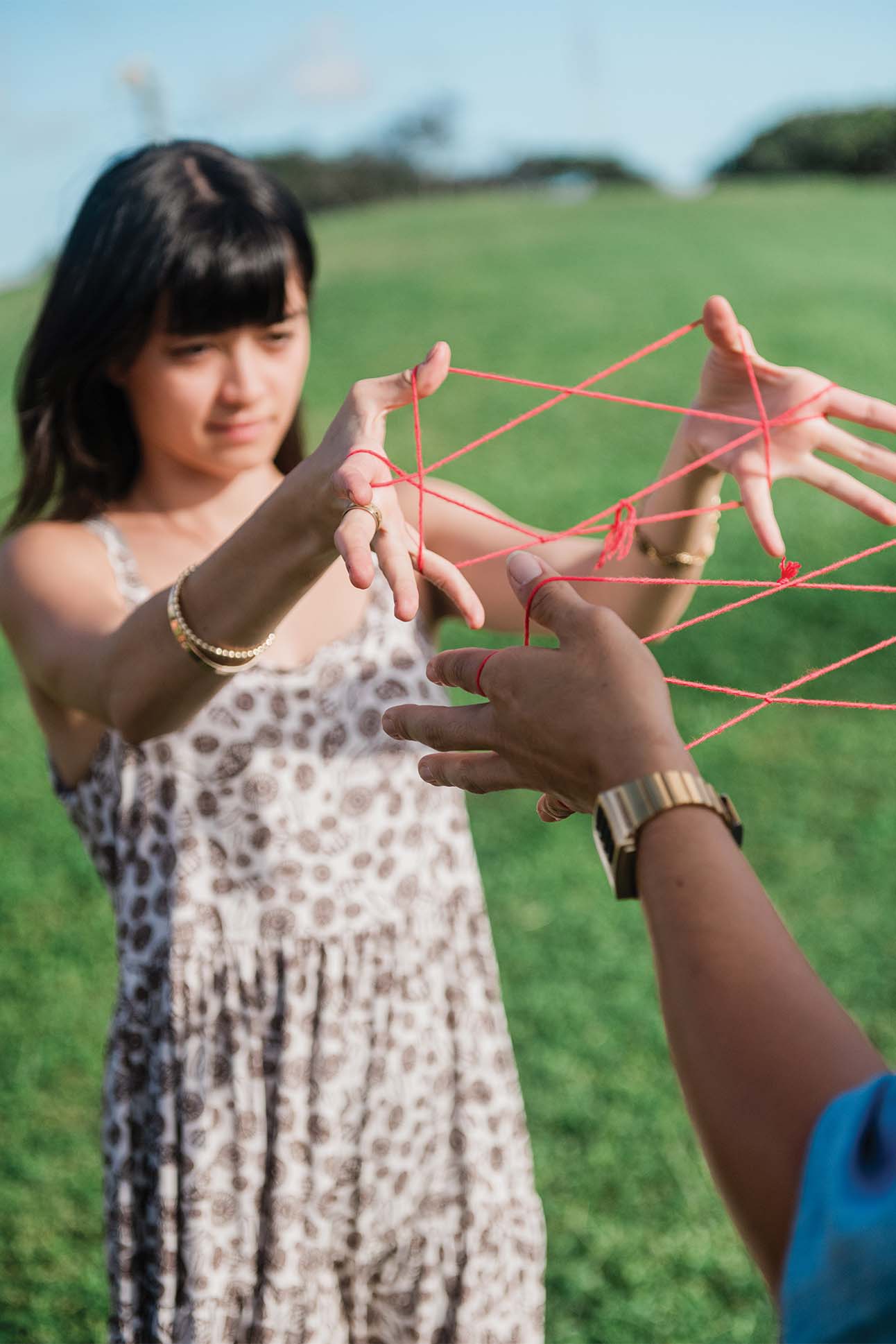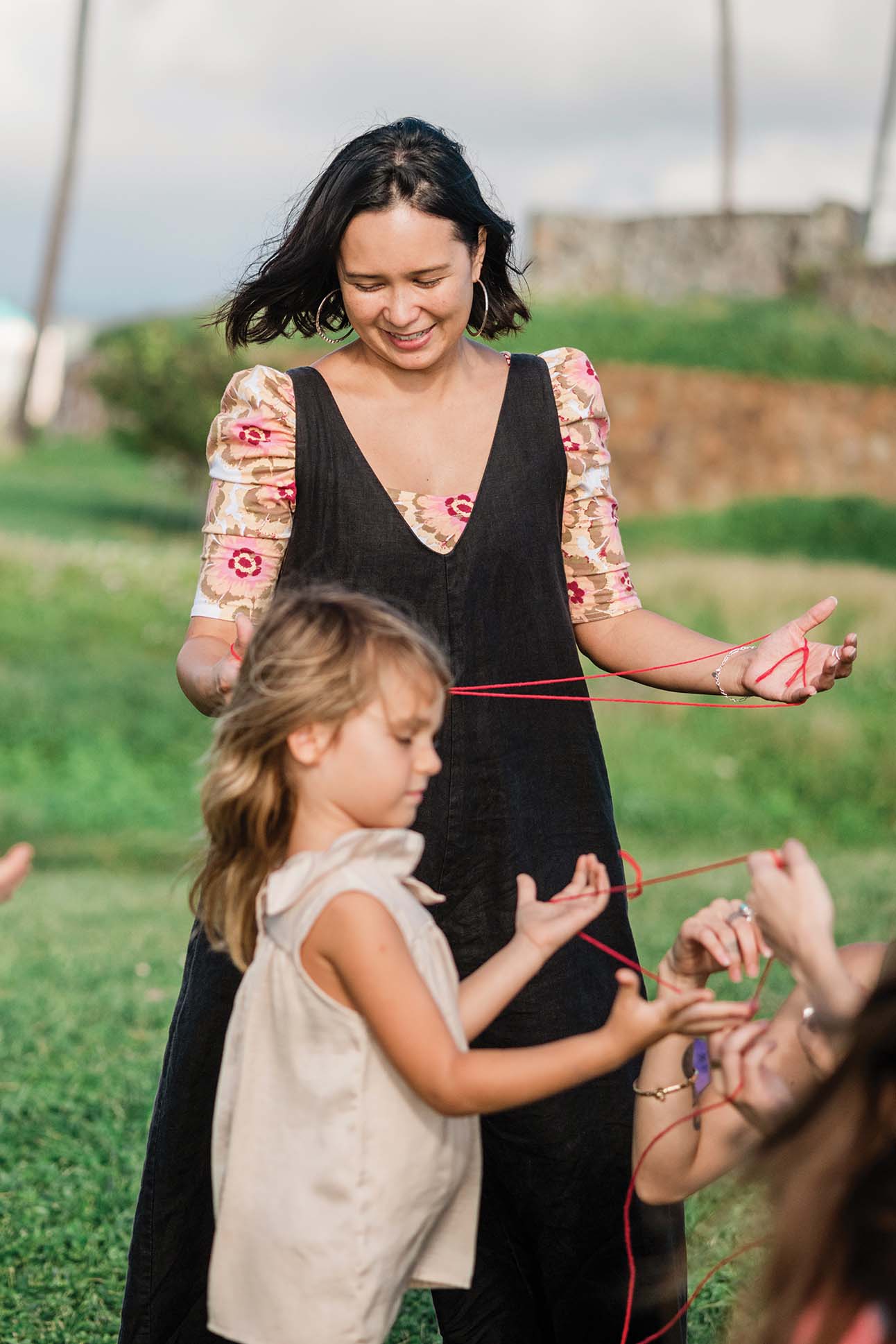Text by Natalie Schack
Images by John Hook
Production and styling by Taylor Kondo
Featuring Mō‘īokekai Edwards, Jhante Iga, and Rachel Lee
In the beginning of my son’s life, his hands moved like entities separate from himself, flapping like anxious, flitting terns trying to make sense of the world around him. As he got older, I watched his arms settle. Moving with intention, he discovered how to play. He held objects, puzzles, and toy cars and turned them over in his hands, his understanding of the world growing with each playful encounter. He brought me playthings and watched how I reacted. He reached for me and, elated, clutched at me when I reached back for him.
A child playing is a child becoming. Through him, I remembered that games are more than just idle pastimes. They are an exchange of meaning, a language all their own, cultivated from a shared history. After 20 years of adulthood, I had forgotten all of that.
It’s hard, after all, to remember exactly how I spent my own childhood moments of play. But through the foggy stretches of time, little glimpses of clarity emerge: getting filthy racing barefoot through the school field, puffing with pride when I beat the boys to the finish line. To decide who would race whom, there were the obligatory duels of jan ken po, a colloquialized name for the game of rock, paper, scissors that we thought was Hawai‘i’s own.
As an adult, I learned that jan ken po was imported to Hawai‘i by Japanese plantation workers, who first came to the islands in 1885. Once here, janken, as it was known in Japan, was adopted by Hawai‘i’s multicultural residents, and the original song of “jankenpon, aiko desho” evolved into the pidginized “jan ken po, I can show” chant that was ubiquitous throughout my childhood. In elementary school, though, we didn’t know any of that. You just knew the game without knowing why or how, one of the subtle ways immigrant cultures have woven themselves into a distinct Hawai‘i identity. We only knew it as something shared and understood by our classmates, as ingrained in us as any other game that proliferated the playgrounds and schoolyards. As girls we would sit on the ridged concrete lānai outside of our fifth-grade classroom, staining our shorts on the ancient, crimson dirt caked in the pavement as we passed string figures back and forth in a game of cat’s cradle. Together we learned how to weave sculptural designs, plucking the string—delicately, delicately—from someone else’s fingers to create some new fractal delight as we passed the time during recess.
As an adult, I learned that these string figures are among the oldest games in history, found in first-century Greek monographs and Edo-period woodblock prints. To Native Hawaiians, it was known as hei, and its complex string figures and slip tricks were accompanied by chants. They functioned as mnemonic devices through which the islands’ history could be recorded with no written language. Hei, much like hula, recounted myths, legends, and genealogies—manifold stories told through the deft slips and weaves of string across fingers.
Some years, we took school trips far afield, spirited away from the red clay of O‘ahu’s central plains to Hawai‘i Island’s little bays, silence, and deep history. There, papamū—those ancient board games carved from rock—stood solemnly near the shoreline. The game, kōnane, was one of tactics, a simulation of war not unlike checkers and played by great warriors and chiefs to hone their battlefield stratagems. It was said that King Kamehameha I, who united the islands under his rule and brought about Hawai‘i’s monarchical dynasty, could defeat an opponent in just one move. As kids, we wrestled for spots around the rocks and made up the rules as we went, unaware of the history embedded within those stone slabs.
Today I can’t help but wonder, “Where are the games now?” Unlike the journey of becoming I see in my son’s games, growing up feels like an excruciating un‑becoming—a fracturing into many small pieces. Grief and disappointment, divorce and despair, loss and insecurity: adulthood is often nothing like a game and feels instead like a transformation in which playfulness has no place.


Or does it? Perhaps embedded in the games of my childhood is an instructiveness that manifests as tools later in life, helping adult-me fight her battles, make decisions, and create meaning and beauty out of nothingness, even in the most unplayful of places. And if those games once ushered my childhood self into maturity—with all of its social norms and mores, its strategies and complex choices—could it do the opposite? Could it lead me back to a version of myself that is content to play in the red earth, weave magic from the mundane, or find joy in a simple game of jan, ken, po? If so, then there is wisdom in those flashes of nostalgia ignited in me as I watch my son go through his own becoming. For woven into those seemingly trivial childhood games—our oldest teachers and loves—are formative lessons that continue to play out as I make my way through the game of life.











